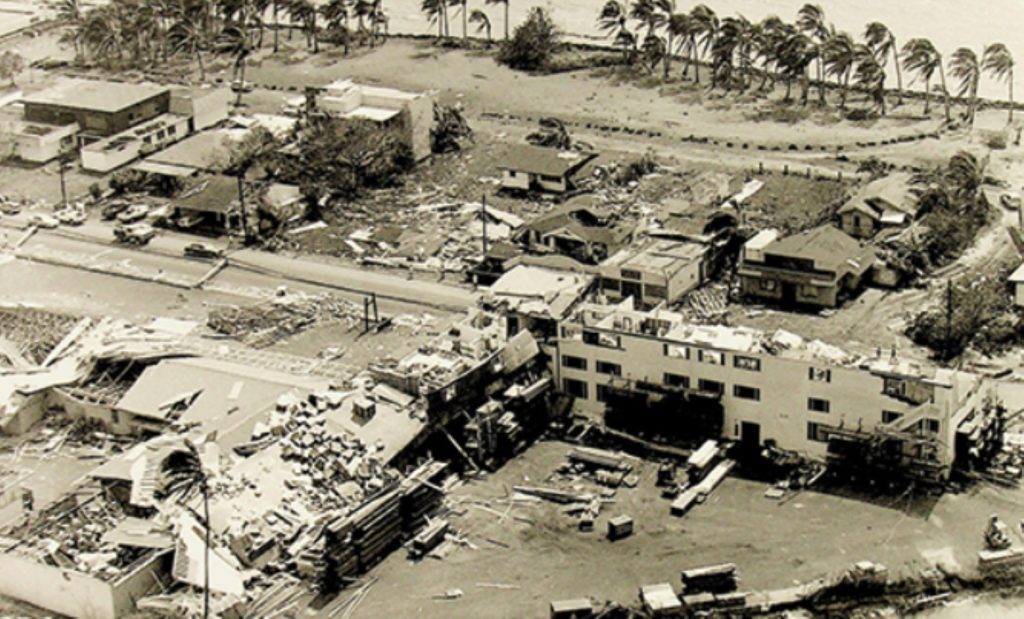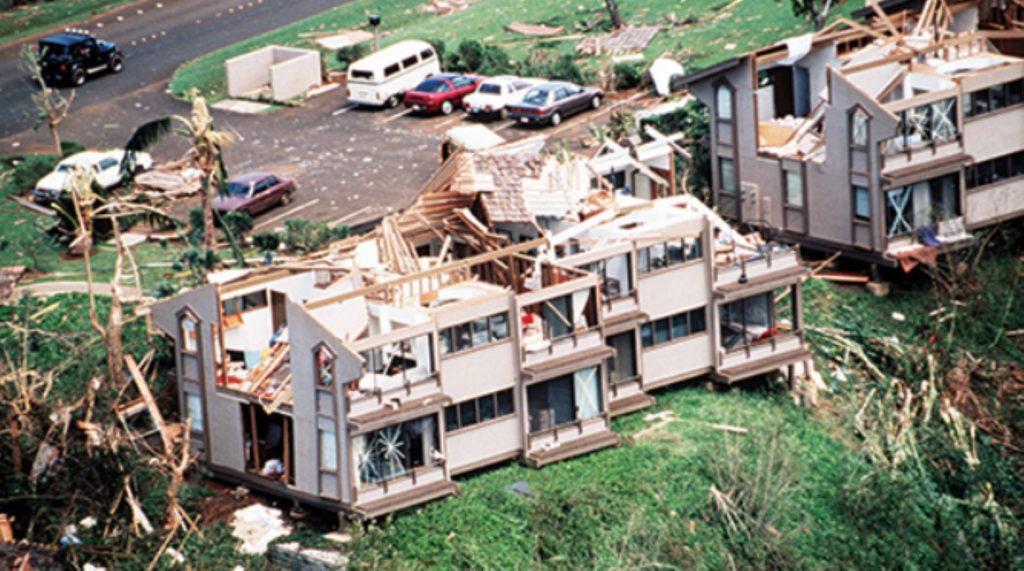It’s officially hurricane season; Kaua‘i Emergency Management reminds residents to be prepared
It’s June 1 and that means it’s officially hurricane season in Hawai‘i and Central Pacific. Are you prepared?
This year’s Central Pacific Hurricane Center 2025 hurricane season outlook calls for 1 to 4 tropical cyclones — including tropical depressions, tropical storms and hurricanes — which would be a near to below average season.
The outlook is a general guide to overall tropical cyclone activity in the Central Pacific; it does not predict storms or how many of these systems will impact Hawai‘i.
An average season — which runs from June 1 through Nov. 30 — has 4 or 5 storms.
“During a tropical cyclone, being prepared is vital for you and your family. If it’s safe, staying at home is often the best choice,” Kaua‘i Emergency Management Agency Administrator Elton Ushio said in a recent news release. “Even though this year’s forecast suggests a near to below average season, it remains essential to prepare your emergency kits as soon as possible.”

Kaua‘i should understand how just one storm can have a significant impact on the community.
The island was struck the afternoon of Sept. 11, 1992, by Hurricane Iniki, the most powerful tropical cyclone to pummel Hawai‘i in modern history and one of the most destructive hurricanes on record anywhere in the United States.
Already a powerful storm churning about 400 miles south of O‘ahu, Iniki was slowing down and gaining more energy Sept. 10 as people worked and keiki went to school. A normal day.
Island life on Kaua‘i went on just as laid back as ever — many people thought the far-off storm, while in the neighborhood, wasn’t a threat, just passing by — as Iniki moved mostly straight to the west, and past the state.
It only took a matter of hours, however, for the atmosphere, literally and figuratively, to take on a foreboding, menacing — and ultimately frightening — tone.
“I don’t believe that anybody thought it was for real,” Dickie Chang, former chief of guest services at the Westin Kaua‘i, told Hawai‘i News Now in September 2017, 25 years after Iniki’s devastating strike.
Central Pacific Hurricane Center forecasters made the shocking report at about 5 p.m. Sept. 10, 1992, that Iniki’s direction shifted, and Kaua‘i and Ni‘ihau were under a hurricane watch.
Less than 4 hours later, the watch was upgraded to a hurricane warning as the small but monstrous storm was clearly moving north.
Then-Kaua‘i County Mayor JoAnn Yukimura was at an event on O‘ahu when the warning was issued.
By then, it was starting to sink in for most people what was imminent as residents and businesses were taking action to be as ready as possible for the unexpected storm that would soon be on their doorstep.
Yukimura told Hawai‘i News Now in September 2017 that she and several Cabinet members with her had to return immediately to Kaua‘i. No commercial flights were left that night from Honolulu, so the Hawai‘i Air National Guard transported them back to the Garden Isle.
People around the island — if they could sleep — went to bed that night not knowing what would happen, only that forecasters predicted the eye of the hurricane would hit Kaua‘i.
Yukimura activated the county’s Emergency Operations Center at about midnight Sept. 11.
“I slept on the floor of the mayor’s office,” she told Hawai‘i News Now in 2017. “We were not very prepared, I’m sorry to say.”
Iniki rammed into the Garden Isle the next afternoon as a major Category 4 hurricane.
Kaua‘i’s South Shore near Port Allen shouldered the brunt of the storm’s rage, with wind gusts of up to 143 mph and water levels — storm surge and waves combined — of nearly 30 feet above normal, according to an April 1993 Natural Disaster Survey Report prepared for Hurricane Iniki by National Oceanic and Atmospheric Administration.
The hurricane killed 7 people and injured about another 100. More than 14,300 homes on the island were affected, with 1,421 destroyed and another 5,152 suffering major damage.
All in all, the storm caused an estimated $1.8 billion in total damages.
The state hadn’t encountered a major hurricane like Iniki since Category 4 Hurricane Dot in 1959 and it was just the fourth time in 40 years Hawai‘i was hit by such a storm.
Tropical cyclones are common in the Eastern Pacific and not uncommon in the Central Pacific, but usually remain well east of or cross south of Hawai‘i.
Of some 72 tropical cyclones — including hurricanes and tropical storms — that have impacted the islands since the mid-20th century, Hawai‘i’s record is only about 12 of them making landfall.
The number does seem small compared with the sheer volume of tropical cyclones that bombard the U.S. Eastern Seaboard and Gulf Coast each year, but it is still nearly 20% in the landfall column — or almost a 1 in 5 chance.
Meteorologists with the National Weather Service in Honolulu do worry about people taking hurricane preparedness seriously for any number of reasons.

“It’s too easy to become complacent and not prepare for events that have a low chance of occurrence, but it’s important to do so when the impacts can be as consequential as from a tropical cyclone,” John Bravender, warning coordination meteorologist with the National Weather Service forecast office in Honolulu, told Big Island Now, Kaua‘i Now’s sister website, in 2023.
Despite the relative rarity of tropical cyclones hitting or impacting the state and little advance notice Kaua‘i residents and visitors had prior to Hurricane Iniki’s arrival, now nearly 33 years ago, the National Oceanic and Atmospheric Administration’s disaster survey said all who were involved were generally well-prepared.
That’s something everyone should consider heading into this hurricane season, especially because another storm like Iniki — or worse — can never be ruled out.
After all: “It only takes one storm to change your life, your family and your community,” Hawai‘i Gov. Josh Green’s proclamation for 2025 Hurricane Preparedness Week says.
Preparation begins with those emergency disaster kits, which Ushio noted should include at least:
- 14-day supply of non-perishable food.
- 1 gallon of water per person per day.
- Battery-powered radio.
- Flashlight.
- Extra supply of prescription medicines.
- Other items specific to individual and family needs.
Central Pacific Hurricane Center continuously monitors weather conditions, employing a network of satellites, land- and ocean-based sensors and aircraft reconnaissance missions operated by National Oceanic and Atmospheric Administration and its partners.
Complex computer modeling and human expertise are the basis for the hurricane center’s track and intensity forecasts that extend out 5 days.
A hurricane or tropical storm watch is issued when hurricane or tropical storm force winds are possible within 48 hours. A hurricane or tropical storm warning is issued when hurricane or tropical storm-force winds are expected within 36 hours.

When a watch or a warning is issued, residents and visitors should listen to their local radio or TV stations and monitor local web/internet media and websites for official weather information and instructions from emergency management entities.
Information about planning and preparation regarding hurricane season is available through the following agencies:
- Kaua‘i Emergency Management Agency.
- Hawai‘i Emergency Management Agency.
- Central Pacific Hurricane Center.
Visit the Kaua‘i County Emergency Management website and click “WENS” to sign up for the Wireless Emergency Notification System, the county’s free emergency notification service.
Those without internet access can also have their phone number and other pertinent information added to the county database by calling Kaua‘i Emergency Management Agency at 808-241-1800.
News reporter Nathan Christophel contributed to this story.









